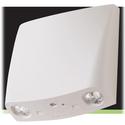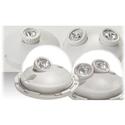Self Diagnostic Damp Location Thermoplastic Nickel–Metal Hydride (NiMH) Nickel–Cadmium (NiCd) Self Diagnostic
Self Diagnostic
Self DiagnosticDamp Location
These items can be placed where they may be splashed with water. Typically they are safe to be used outdoors.Thermoplastic
Thermoplastic is a material, a polymer, that becomes pliable or moldable above a specific temperature and solidifies upon cooling.Nickel–Cadmium (NiCd)
Emergency Lighting is your best source for NiCad batteries, including rechargeable NiCD batteries. We carry a variety of sizes, from AAA NiCD batteries to the larger F cell NiCD batteries. Our selections not only feature a range of sizes, but also an array of battery configurations. We can even build batteries to suit your need.
Shop our rechargeable NiCD batteries to replace the batteries in your standard electronic devices, emergency lighting and exit signs, solar lighting, and so much more. Use our battery finder to find the battery type and configuration that you need.
EmergencyLighting.com is dedicated to offering the very best batteries available on the market for all your needs. You’ll appreciate great prices and fast shipping so you never have to endure downtime!


